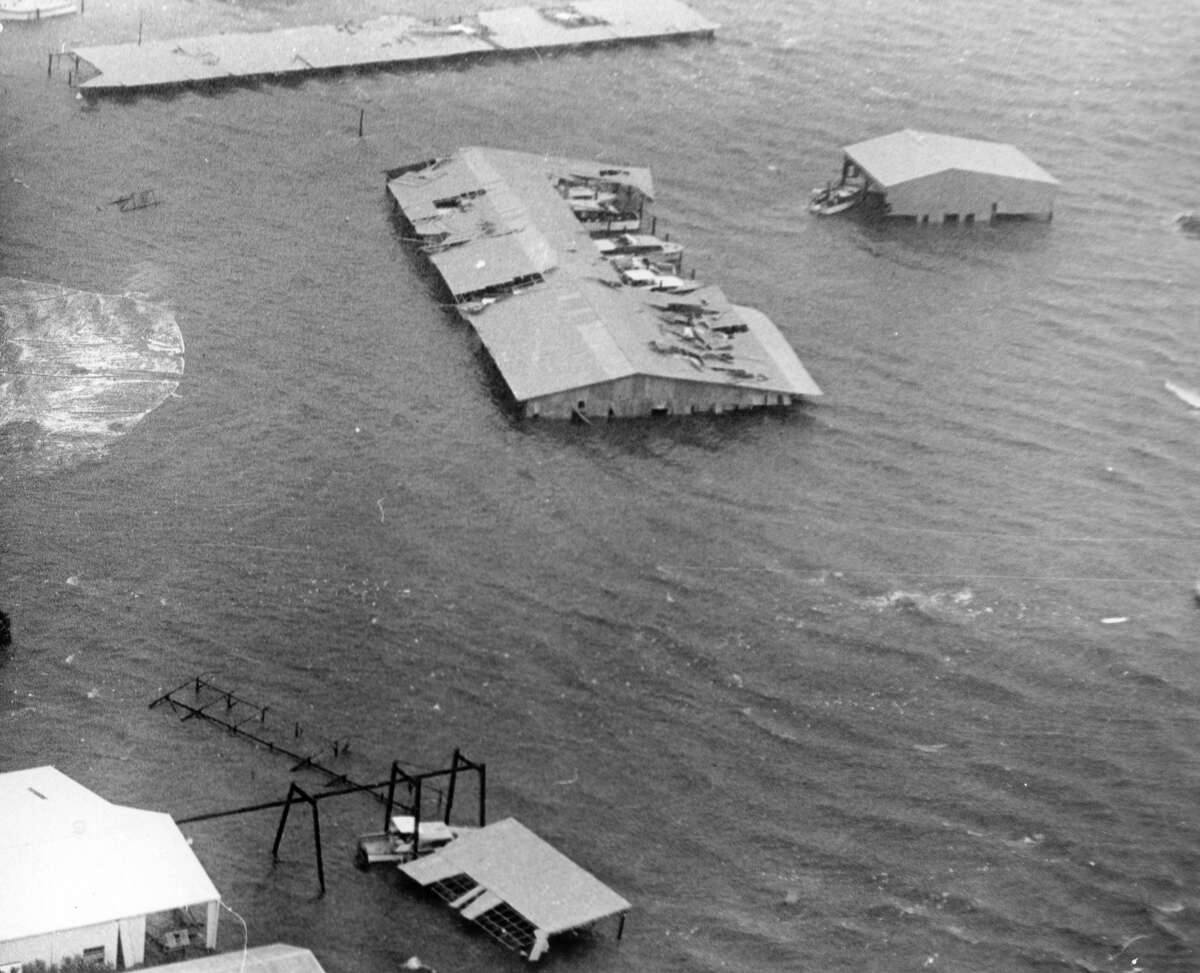
Prior to the storm, storm warnings are issued for the entire Gulf Coast from Galveston to the Mississippi River.

Notably, on October 5, when the system was centered over the Big Bend region, a rocket launched by the United States Navy in White Sands, New Mexico, took an unintended photograph of the depression from an altitude of about 100 miles (160 km), which became the first such large-scale image of a tropical cyclone. The storm causes 6.09 inches (155 mm) of rain in Brownsville.

October 3, 1954 – An unnumbered tropical depression makes landfall in the Brownsville area, bringing rough seas.July 29, 1954 – Tropical Storm Barbara makes landfall on Vermilion Bay before moving into Texas as a tropical depression, bringing rain and gusty winds.In the town of Ozona alone, the floods caused $2 million in damages.

A bridge on the Pecos River collapsed due to the heavy rains. The storm caused high rainfall totals, peaking at 24 inches (610 mm) northwest of Del Rio. However, the resulting flood caused by the remnants of Alice were considered a 1 in 2000 year event. Damage on the coast close to where Alice made landfall remained minimal. June 25, 1954 – The first Hurricane Alice of 1954 makes landfall south of Brownsville as a hurricane.Sections of highway on North Padre Island are washed away. Tides rise to 4 feet (1,200 mm) at Padre Island. Damage is reported as far north as Port Aransas. October 4, 1950 – Tropical Storm How hits the Mexican coast 150 miles (240 km) south of Brownsville.Hurricane Celia made landfall as a major hurricane in 1970, causing $1.8 billion in damages. In the 1970s, five hurricanes affected Texas. Both hurricanes were subsequently retired. While the 1960s only featured six tropical cyclones making landfall on Texas, Hurricane Carla and Hurricane Beulah, both destructive Category 5s, made landfall as Category 4 hurricanes during the decade. Hurricane Audrey, the most destructive Texas hurricane during the 1950s, was the first hurricane to impact Texas to have its name retired. Starting in 1955, hurricanes that caused substantial damage to any country could have their name retired from the list of names for the Atlantic basin.

In the 1950s, five tropical cyclones made landfall on Texas as hurricanes. In terms of wind speed, Hurricane Carla is the strongest storm to affect the state, producing maximum sustained winds equivalent to Category 4 status on the Saffir–Simpson hurricane scale. The first storm to impact the state during the period was Tropical Storm How in October 1950, with the latest being Tropical Depression Twenty in September 1979. While the most intense storms in terms of barometric pressure are both Hurricane Carla in 1961 and Hurricane Beulah in 1967, Carla caused the most fatalities and damages, with $325 million in damages and 46 deaths. ĭuring this period, the most active month for storms affecting Texas is September, with twelve total storms, while no recorded storms have affected Texas during the months of November through May. According to David Roth of the Hydrometeorological Prediction Center, a tropical cyclone makes landfall along the coastline about three times every four years, and on any 50 mi (80 km) segment of the coastline a hurricane makes landfall about once every six years. Structural damage caused by Hurricane Celiaįrom 1950 to 1979, at least 34 tropical or subtropical cyclones affected the U.S.


 0 kommentar(er)
0 kommentar(er)
